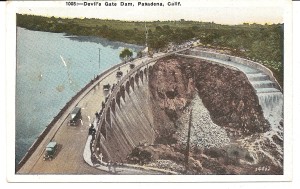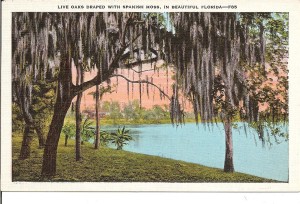My slightly younger brother, JP and I have always counted ourselves fortunate that we got through primary school in the happy baby-boom years of the very early 1960ies, before a hitherto solid and well-established education system suddenly lost all confidence in itself and began whoring after strange gods, fads and theories. We both were taught the old phonics way, carefully sounding out the letters and the sounds, until… oh! There was that flash of understanding, at unraveling a new word, and another and another. We read confidently and omnivorously from the second grade on, and were only a little scarred from the infliction of the “New Math” on our otherwise happy little souls. It seemed like one semester I was memorizing the times tables and the “gozintas” (two gozinta four two times) and wrestling with very, very long division, and suddenly it was all about prime numbers and sectors and points on a line, and what was all that in aid of?
I really would have rather gone on with word problems, thank you very much, rather than calculus for the elementary school set. It was at least useful, working out how much paint or carpet to cover an area, or how what time a train going so fast would get to the next city. Thanks to the “New Math” I wound up working out how to figure what was 70% off of $15,000 when I was forty-three. Got to love those educational fads. You spend the rest of your life making up for having them inflicted on you. Pippy’s elementary education was far more adversely affected; she caught the “whole word” reading thing in the neck. While she did successfully negotiate the second grade and learned to read on schedule, she never enjoyed it as much, or read as much as JP and I did routinely.
Our baby brother, Sander had the worst time of all. Mom racked up conference after conference with his second grade-teacher over his failure to advance, and generally unsatisfactory class behavior. Mom was a pretty experienced and hard-bitten Mom by the time she rotated four children through the same set of public schools. She had cured many of our teachers of their initial habit of carving off great dripping slabs of condescension to parents in a nominally blue-collar working class suburb by tactfully making it clear that both she and Dad were college graduates also. Sander’s second-grade teacher remained pretty much a burr under Mom’s parental saddle, especially since he was struggling desperately and unhappily in her classroom. It never got so bad that he was wetting the bed, or developing convenient illnesses, but he was adamant about not enjoying school… or at least the second-grade class.
We began to wonder if the difference was in the teacher; she seemed to be very cold, and judgmental. He had done very well the year before, an active, charming seven-year old, the youngest child in a family of mostly adults, who were devoted to books and education. Later on, JP would suggest that Sander was thought to be so bright by his teachers because he would constantly uncork four-syllable words that he picked up from us. It really wasn’t the way, then, to blame a teacher entirely for a problem, but this was our baby brother, our real doll-baby and pet, but everything his teacher tagged on him was always his fault. First his teacher adamantly insisted he was a discipline problem, then that he was hyper-active and out to be in a special class… and then took the cake by suggesting that he was mentally retarded. Mom had gone to a great deal of trouble to get him after-school tutoring, and she blew her stack at that. Whatever was his problem, he was not retarded, and she was shocked that an experienced teacher would even make that unsupported diagnosis.
About halfway through the semester, Mom noticed that Sander rubbed his eyes a lot, and they always looked a bit reddened and crusty at the end of the school day. Eye problems? I was nearsighted, as blind as a bat without glasses, which was about the first thing that all my teachers knew about me, and I had never had that sort of trouble. Mom took him to the ophthalmologist; it turned out he was quite the opposite from me— he was far-sighted, to the point where it was acutely uncomfortable to concentrate for long on the written word. Once he was fitted with glasses, all the problems— except for the basic personality clash with the unsympathetic teacher— melted away.
Mom added her scalp, metaphorically speaking, to her collection, right next to the scalp of my 8th grade English teacher, Mrs. Range, who was only called Mrs. De-Range out of her hearing. Her students all knew very well that she was a nutcase almost immediately, beating the school administration to that knowledge by several years. Late middle age had not been kind to Mrs. De-Range; in fact it had been quite brutally unkind. She was a tall, gawky Olive Oyle figure of a woman, with faded reddish hair scraped back in a meager old-fashioned bun, long, yellowish teeth like a horses’ and a figure like a lumpy and half-empty sack suspended from narrow, coat-hanger shoulders. As a teacher she was fairly competent in the old-fashioned way; a strict grammarian and exacting with punctuation, wielding a slashing red pen with little regard for our delicate self-esteem. She expected us to keep a special folder of all our classroom and homework assignments, to methodically log them in by their assignment number, make a note of the grade received, and keep them when she returned them to us, all splattered over with red ink corrections. This was eccentric, but bearable; as teacher requirements went, not much variance from the normal.
What wasn’t normal were the sudden rages. In the middle of a pleasant fall day, doors and windows open for air, and the distant pleasant sound of a ball game going on, and maybe the drill team counting cadence drifting in from the athletic fields, when we were engaged in a classroom assignment, nothing but the occasional rustle of a turning page, the scritch of pencil on paper, someone sniffing or shifting in their chair… Mrs. Range would suddenly slam a book on her desk and go into a screeching tirade about how noisy we were, and how she wouldn’t put up with this for a minute, and what badly-behaved, unteachable little horrors we all were. We would sit, cowering under the unprovoked blast of irrational anger, our eyes sliding a little to the right or left, wondering just what had set her off this time. What noise was it she was hearing? Her classroom was always quiet. Even the bad kids were afraid, spooked by her sudden spirals of irrational fury.
I have no idea how much of this was communicated to our parents, or if any of them would have believed it. But I am pretty sure that Mom had Mrs. Range’s number, especially after the legendary teacher’s conference— called at the request of Mrs. Range. I had too many missing or incomplete assignments, and it seemed that she took a vicious pleasure in showing Mom and I all the empty boxes in the grade-book against my name, at the after-school conference in the empty classroom. This was almost as baffling as the sudden rages, because I was fairly conscientious—a little absentminded, sometimes, a little too prone to daydream— but to miss nearly a third of the assignments so far? “Show your mother your class-work folder,” commanded Mrs. Range, and I brought it out, and opened it on the desk; my own list of the assignments, logged in as they were returned to me, the corrected and graded assignments all filed neatly in order.
All of them were there, every one of the ones that were blanks in Mrs. Range’s book, corrected and graded in her own hand, all checked off on my list. Mom looked at my folder, at Mrs. Range’s own assignment record, and said in a voice of velvet gentleness “I believe we have solved the problem of the missing assignments. Thank you for your time, Mrs. Range— will there be anything more?” Mrs. Range’s face was unreadable. There was the faintest gleam from the steel gauntlet, the tiniest clink audible, when Mom threw it down, adding “Of course, we will pay… special attention… to the completing of all Celia’s class and homework assignments after today. Good grades are very important to us.” Mom took up her car keys, “Coming, Celia?” Out in the parking lot, she fumed. “Horrible woman… and such a snob. She went to a perfectly good teacher’s school in Texas, but she groveled so when I told her that your father and I went to Occidental… it was embarrassing. And so strange to have missed so many of your assignments… good thing she had you keep them.” “Yes,” I said, “A very good thing.” I was still trying to puzzle the look of Mrs. Range’s face; bafflement, fury frustrated of an intended target.
What on earth had she been thinking, what sort of mental lapse was this? I would never know, but two years later, after I had moved on to High School, JP came home with the intelligence that Mrs. Range had truly and ultimately lost it, melting down in the middle of a tirade to a class of terrified students, from which— according to JP—she had been removed by men in nice white coats armed with a strait-jacket, drugs and a large net. The school administration may have been shocked, but I am confident that none of her former students were surprised in the least.



















Recent Comments